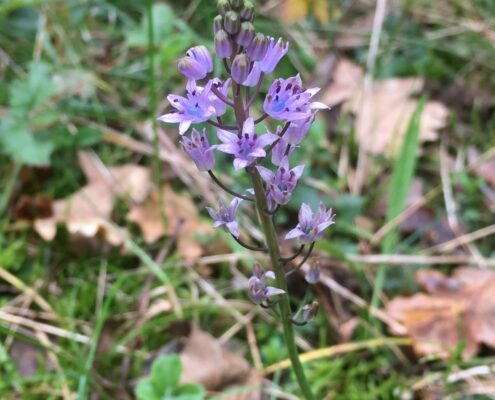 https://greenmarked.it/wp-content/uploads/2024/07/Bleachedcoral.jpg
768
1024
Paula Ruiz del Coro
https://greenmarked.it/wp-content/uploads/2022/01/LOGO-GREENMARKED-SITO-600x600.png
Paula Ruiz del Coro2024-07-01 22:02:332024-07-01 23:12:42The High Seas Treaty: Protecting Oceans’ Biodiversity
https://greenmarked.it/wp-content/uploads/2024/07/Bleachedcoral.jpg
768
1024
Paula Ruiz del Coro
https://greenmarked.it/wp-content/uploads/2022/01/LOGO-GREENMARKED-SITO-600x600.png
Paula Ruiz del Coro2024-07-01 22:02:332024-07-01 23:12:42The High Seas Treaty: Protecting Oceans’ BiodiversityMay 16, 2024

A few months ago, there was a proposal to lighten the protection status for the wolf (Canis lupus) in the European Union (EU) [1]. The proposal was turned down, but that was neither the beginning nor the end of the controversy that this animal carries along. Let’s dive a little bit deeper in wolves’ history and our relationship with them.
Most of us have heard that wolves population is slowly growing and becoming dangerous, but is that the case? As strange as it may sound, wolves have been present all over Europe until not long ago.
Before 1800 they could be found in all of the countries in Southern Europe, as well as a huge share of Central Europe (France, Germany, Austria, Poland, Slovenia). They were also present in the Scandinavian Peninsula and most of Eastern Europe. Wolves were targeted all over the continent, and seen as a grave danger for cattle, and they were prosecuted, exterminated in several places and forced to leave in some others. In 1960, wolves had reached minimum numbers in Europe [2]. Some populations in the Northwest of the Iberian Peninsula, some in the Apennines, some in the Balkans, and some in the Carpathian Mountains resisted. It was only after 1970 that this tendency towards its disappearance reverted, and their populations stopped decreasing, stabilized, and later began to grow again slowly.

Fig 1: Historical distribution map for the Wolf population in Europe. Figure by Rewilding Europe.
The current estimates talk about 20 300 wolves all over Europe, almost doubling the 11 200 individuals counted in 2012 [3]. In terms of recovering the wolf population, this is a positive trend. But not everyone would consider it like that. Wolves are a very controversial topic, as well as its reintroduction. Or should we say their take-back?
We are all familiar with the discussions about these animals. They have been present since our childhood, first as villains in fairytales, and later as villains in the news. They are said to feed mainly from cattle and destroy flocks of domestic animals because they are “spreading into new territories”. The truth is, they are just returning to somewhere they had been thrown out. And humans have forgotten about how to co-exist with them.
Wolves are mainly predators or scavengers, whichever works better for them. This means they will hunt or, if they find some fresh carcass, they will eat from there. Scientific literature indicates that when forced to choose, in equal conditions of abundance, wolves prefer wild prey over cattle [4]. However, this fact is not very well known and will probably get called out in southern countries. Why is this happening?
In Spain and Italy, wolves are attacking cattle more frequently. There, red and roe deer are the main preys for wolf packs. Also there, deer populations are quite low, leading wolves to turn towards cattle when they don’t find enough wild prey. Wolves also turn towards livestock when packs are not strong enough to hunt wild species. Years and years of targeting both the wolf packs and the ungulates has created a critical situation: not enough prey, and weak packs that cannot hunt them.
To manage the conflicts arising from the wolf takeback, we need to recover deer populations. With their recovery, wolves will have their main source of food available, which would reduce attacks on cattle. Also, by stopping the attacks on wolves, packs will grow stronger, which will allow them to hunt wild prey such as deer or boars, leaving domestic animals alone.
Strange as it may sound, wolf attacks on cattle could be reduced with a reinforcement of the current packs, as long as it goes hand in hand with an increase in the availability of wild prey. It is, of course, a process that will take some time, as animal populations in ecosystems do not get to an ideal state from one day to another. Meanwhile, there is still some work to do regarding these animals’ recovery.
Several protection measures for cattle have little to do with “eliminating the wolf” [5], these have been traditionally used, such as confining animals during the night, collective livestock guarding, predator-proof fencing, and the use of guardian dogs.
An interesting tool that seems to reduce attacks is to leave the natural defences of cattle untouched, in other words, not removing their horns. Also, since wolves tend to target animals that are of a similar or smaller size, mixing bigger animals, such as cows or horses, with smaller ones, such as sheep, keeps predators away.
Wolves are a touchy subject, especially in areas where they are recovering their ground. They are seen as a threat by farmers, who lose their livestock to them, hunters, who may see them as competitors, and people, who will have to coexist with them. For the latest, attacking humans is not common at all. Wolves will do everything to avoid human contact. On the other hand, concerning the first two points, with proper cattle management, the mentioned recovery of wild prey, and the strengthening of the packs, attacks could be very much minimized.
Sometimes it may seem that laws are written from offices where they do not get the particularities of each situation, but the solution is not, in any way, to reduce the protection status of the wolf. There are many misconceptions arising from the fear of an animal that has the same right to live here as we do. We – wolves and humans together – need proper management of the ecosystem, of the environment, that allows us to learn to coexist.
References:
Click here to expand the references[1] Hodgson, R. (2023, 21 December). Brussels proposes lighter protection for Europe’s growing wolf population. Retrieved on 8 May, from https://www.euronews.com/green/2023/12/20/brussels-proposes-lighter-protection-for-europes-growing-wolf-population
[2] Rewilding Europe (2023, 14 September). Living with wolves. Retrieved on 7 May, from https://rewildingeurope.com/rewilding-in-action/wildlife-comeback/wolf/
[3] Elcacho, J. (2023, 25 December). El lobo reconquista Europa: cifras y mapas del retorno de una especie emblemática y conflictiva. Retrieved on 6 May, from https://www.lavanguardia.com/natural/20231225/9469966/lobo-reconquista-europa-cifras-mapas-retorno-especie-emblematica-conflictiva.html
[4] Janeiro-Otero A., Newsome T.M., Van Eeden L.M., Riple W.J., Dormann C.F. (2020, March). Grey wolf (Canis lupus) predation on livestock in relation to prey availability. Retrieved on 7 May from https://www.sciencedirect.com/science/article/pii/S0006320719316003
[5] Tack J., Mulier A., Van Hecke B., Jarý J. (2019) Assessment of current knowledge on wolves in Europe with a view to their effective conservation and management – A partial review of the scientific literature on the wolf in Europe. Retrieved on 9 May, from https://op.europa.eu/en/publication-detail/-/publication/b11a6cd5-bd90-11e9-9d01-01aa75ed71a1/language-en
Related articles:
Cover and preview image: Iberian wolf in Antequera (2012, October 3). Photo by rjime31 on Wikimedia Commons.










